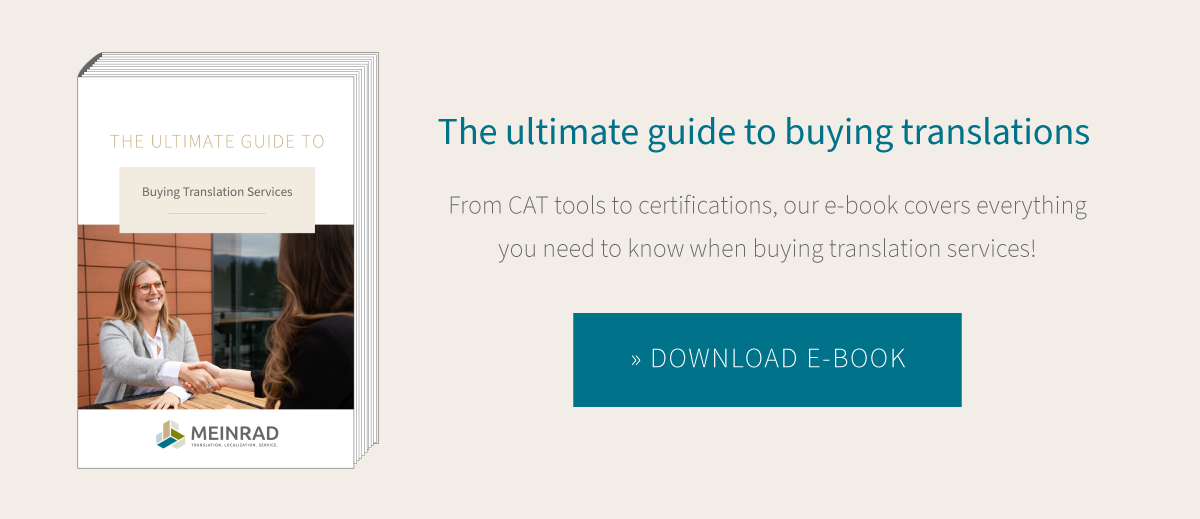
It seems obvious that using multiple language service providers can spread the risk, and it may be tempting to give each new project to the cheapest provider. But be warned: you’ll be throwing away the savings you could be making from translation memories, and increasing the likelihood of inconsistent translations.
In theory at least, it sounds like the best, most cost-effective method of buying translations: for each short translation you need, you contact a handful of translation agencies and the agency that gives you the cheapest quote gets the job. But if you take a closer look, in the long run this approach isn’t your best bet. It definitely won’t turn out to be as good value as you thought, and the quality and consistency of your translations will suffer.
Even putting all that to one side, it’s more work for your staff responsible for translations to send the files to multiple translation agencies and then to compare the quotes. And of course all this will delay the translation, which isn’t exactly ideal when deadlines are tight.
Translation memories are worth their weight in gold
Constantly switching between service providers means you won’t save as much money as you could – with translations, you’re much better off sticking with one provider. Each agency uses translation memories, which save translations to help with future projects. That means if a sentence comes up again, it doesn’t need to be translated or paid for (in full) again. And the bigger the translation memory, i.e. the more texts it contains, the more money you can save. Each agency only uses its own translation memories, so it makes no sense for agency A to translate Version 1.0 of your operating instructions and agency B to translation Version 2.0: you’ll miss out on the cost savings you’d be making if the same agency translated both versions.
An inconsistent mess
Another unwelcome consequence of sharing your translation projects around is inconsistent translations. As explained above, each translation agency has its own translation memories, and most of them will also create their own term bases for their clients. This inevitably means that individual terms and sentences will sometimes be translated differently. So even if your translations aren’t necessarily wrong, there may well be inconsistent terminology in the instructions, brochures etc. you produce. It’s not unheard of for someone from office A to send a text to one translation agency and someone from office B to send the same text to another. This will almost certainly result in two different brochures in circulation – and of course they’ve paid twice as much for it as they needed to. Plus there’s the extra time and effort involved in working with each translation agency on the client’s term bases.
Split it up strategically
None of this is to say that a company should never have more than one translation partner. In principle, there’s nothing wrong with dividing up large translation projects between several translation agencies – though it’s a good idea to keep the number relatively low. What matters is that you think strategically: for example, the best thing to do may be dividing projects up by department or by language combination, as this ensures you always maximize the savings you make from translation memories and keep your texts as consistent as possible.
How a long-term partnership can benefit you
A long-term partnership has a lot in its favour compared to an on-off relationship:
- Better translations thanks to core translators, who over time come to know your terminology like the back of their hand (which also means they work faster)
- Avoid inconsistencies
- Optimum workflows
- Project managers who know exactly what you need
- Clearly defined processes
- Save money through optimum use of translation memories
- Reduced workload for your staff
- Closer personal relationships, which makes working together more enjoyable
- Fewer supplier audits – in fact, these often aren’t needed at all if the agency has the appropriate ISO certification
- Ensure consistent procedures and quality with framework agreements
- Ongoing optimization and improvement of procedures
A centralized approach to buying translations will benefit both you as the client and the translation agency. You can maximize the money you save, and you’ll usually get better prices than if you only use the agency sporadically. And the agency can deliver the best possible quality and consistency, establish workflows tailored to your exact needs, and manage their own workload and capacity more effectively.
Main image: © Storyblocks


